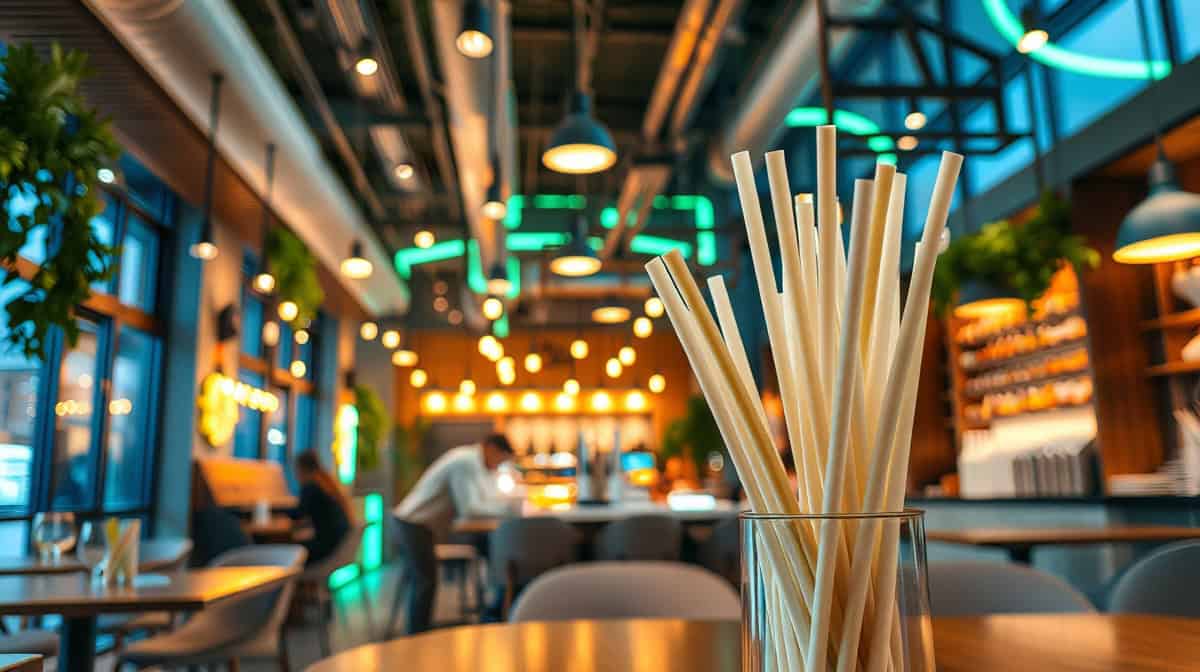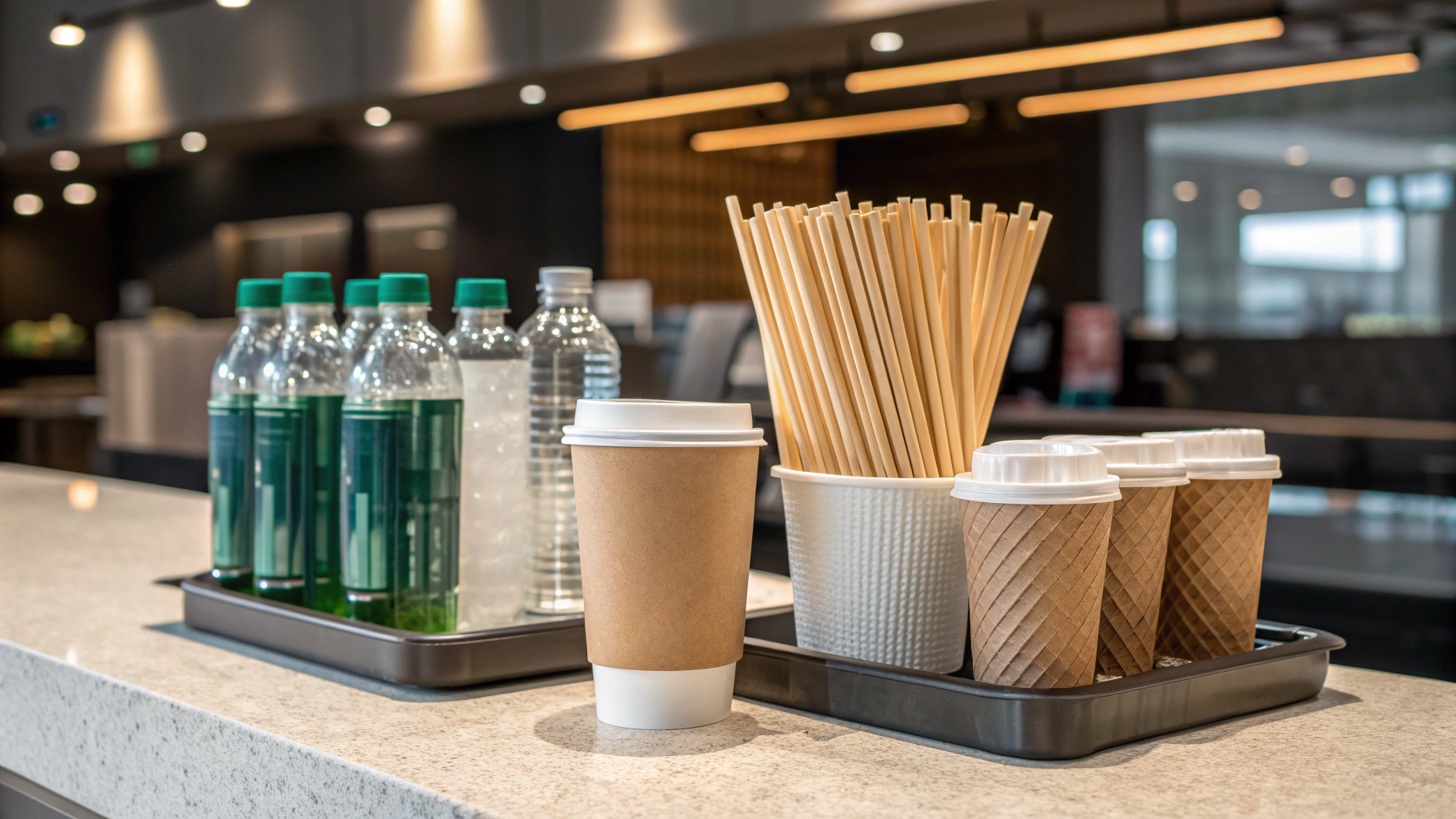Eco-Friendly Straws Market in 2025: Top Sustainable Solutions for Food Service

In 2025, the food service industry is riding a green wave, and the eco-friendly straws market is at the helm. With global supply chain trends pushing for sustainability, businesses—from cafes to hotels—are sourcing biodegradable straws in bulk to meet regulatory demands and customer expectations. According to Statista, the sustainable packaging sector is projected to hit $400 billion by 2027, with eco-friendly straws leading the charge.
Why does this matter for B2B outer trade? PLA-free straws and certified compostable options aren’t just eco-smart—they’re cost-smart, cutting waste expenses and boosting brand appeal. This guide explores why eco-friendly straws dominate food service procurement in 2025—and how you can leverage them for your business.
Compliance and Certifications: Ensuring Eco-Friendly Straws Meet 2025 Standards

For B2B buyers in the outer trade space, compliance isn’t optional—it’s critical. Eco-friendly straws must meet stringent standards like ASTM D6400, which mandates full decomposition within 180 days in industrial compost facilities. In Europe, EN 13432 ensures no toxic residues, aligning with EU plastic bans affecting over 60% of food service markets (Trade.gov, 2024).
- ASTM D6400: U.S. benchmark for compostability.
- EN 13432: EU standard for biodegradable packaging.
- BPI-certificering: Validates eco-claims for outer trade.
Hotels and restaurants sourcing certified compostable straws from bulk suppliers in 2025 can dodge fines and tap into a market growing at an 11% CAGR (Market Research Future). It’s a win-win for compliance and credibility.
Eco-Friendly Straws vs. Alternatives: A Procurement Perspective

Choosing the right straw for your food service operation? Here’s how eco-friendly straws stack up against alternatives in 2025:
| Straw Type | Biodegradability | Cost (Bulk) | Milieu-impact | Naleving |
|---|---|---|---|---|
| PLA-Free Straws | Hoog | Moderate | Laag | Hoog |
| Biodegradable Straws | Hoog | Moderate | Laag | Hoog |
| Kunststof rietjes | Laag | Laag | Hoog | Laag |
| Papieren rietjes | Moderate | Moderate | Moderate | Moderate |
| Bamboe rietjes | Hoog | Hoog | Laag | Hoog |
PLA-free straws excel for B2B procurement with low impact and high compliance. Optimize your supply chain with sustainable procurement solutions.
Business Advantages: Boosting ROI with Eco-Friendly Straws

For B2B outer trade, eco-friendly straws are a profitability powerhouse. Sustainable straw procurement for hotels slashes waste costs by up to 20% (EPA, 2024), freeing up budget for growth.
- Cost Savings: Less landfill use means lower disposal fees.
- Brand Appeal: 70% of buyers prefer eco-friendly suppliers (Statista).
- Scalability: Bulk biodegradable straws from 2025 suppliers cut unit costs.
Pro Tip: Pair with a sustainability report to showcase your green creds—clients love transparency.
Environmental Impact: How Eco-Friendly Straws Shape a Greener 2025
The eco-friendly straws market tackles a massive issue: 60 billion plastic straws clog U.S. landfills yearly (EPA). By 2025, switching to biodegradable straws could halve this, per industry forecasts, aligning with global supply chain trends toward zero waste.
PLA-free straws decompose in 90-180 days, leaving no trace—unlike plastic’s 500-year legacy. This shift supports circular economy goals, a top priority for B2B outer trade in 2025 (Forbes, 2024).
Case Study: Eco-Friendly Straws in Global Hospitality
In 2024, EcoStay Hotels rolled out biodegradable sugarcane straws across 12 properties in North America and Europe. Partnering with a bulk supplier, they replaced 500,000 plastic straws in year one, boosting guest satisfaction by 15% (internal survey) and cutting waste costs by 18%.
This move cemented their leadership in sustainable hospitality—a blueprint for B2B success in outer trade.
Frequently Asked Questions About Eco-Friendly Straws
- Why are eco-friendly straws better for the environment than plastic?
- Eco-friendly straws, like biodegradable and PLA-free options, break down naturally in 90-180 days, unlike plastic straws that pollute for centuries.
- Can I buy eco-friendly straws in bulk for my business?
- Yes, bulk suppliers in 2025, such as MOMOIO, offer biodegradable straws at competitive rates, perfect for cost-effective B2B procurement.
- What certifications should I check for eco-friendly straws?
- Look for ASTM D6400, EN 13432, and BPI certifications to ensure compostability and compliance with global standards.
- How do eco-friendly straws save costs for food service?
- Businesses report up to 20% savings on waste management by switching to compostable straws, reducing landfill fees.
- How do eco-friendly straws affect customer loyalty?
- Using sustainable straws aligns with customer values, boosting loyalty—70% of B2B buyers prefer eco-conscious suppliers (Statista, 2024).
- What are the alternatives to eco-friendly straws?
- Alternatives include plastic, paper, and metal straws, but eco-friendly options lead in sustainability and regulatory compliance.
- How do bamboo straws compare to other sustainable options?
- Bamboo straws are renewable, biodegradable, and have a lower carbon footprint than many alternatives.
Conclusion: Lead the 2025 Food Service Market with Eco-Friendly Straws
The eco-friendly straws market is set to rule food service in 2025, blending sustainability with B2B procurement wins. From cutting costs to meeting global compliance, PLA-free and biodegradable straws are your ticket to outer trade success.
Ready to upgrade your supply chain? request a bulk quote from MOMOIO now. Let’s build a greener future—together!






